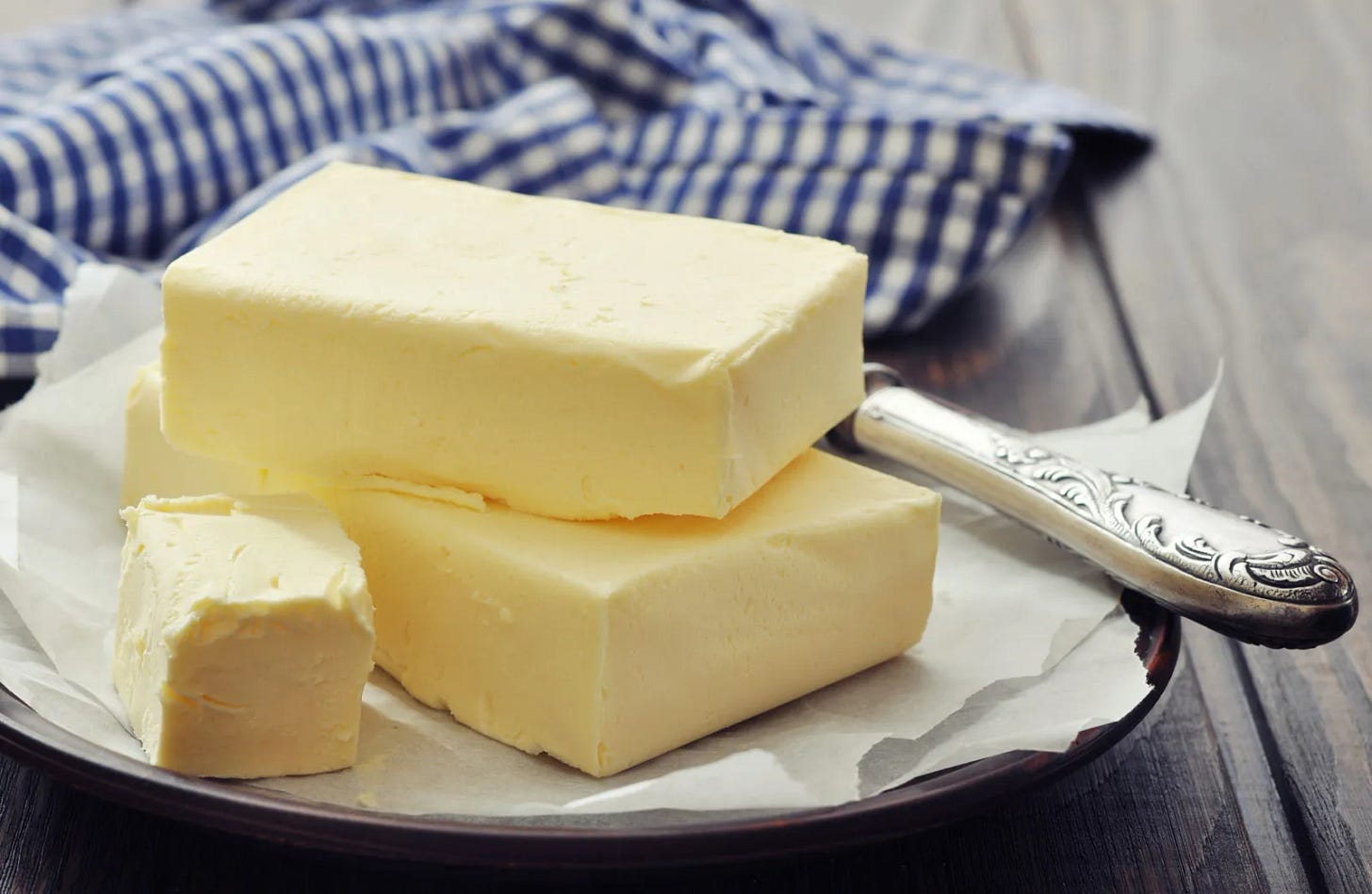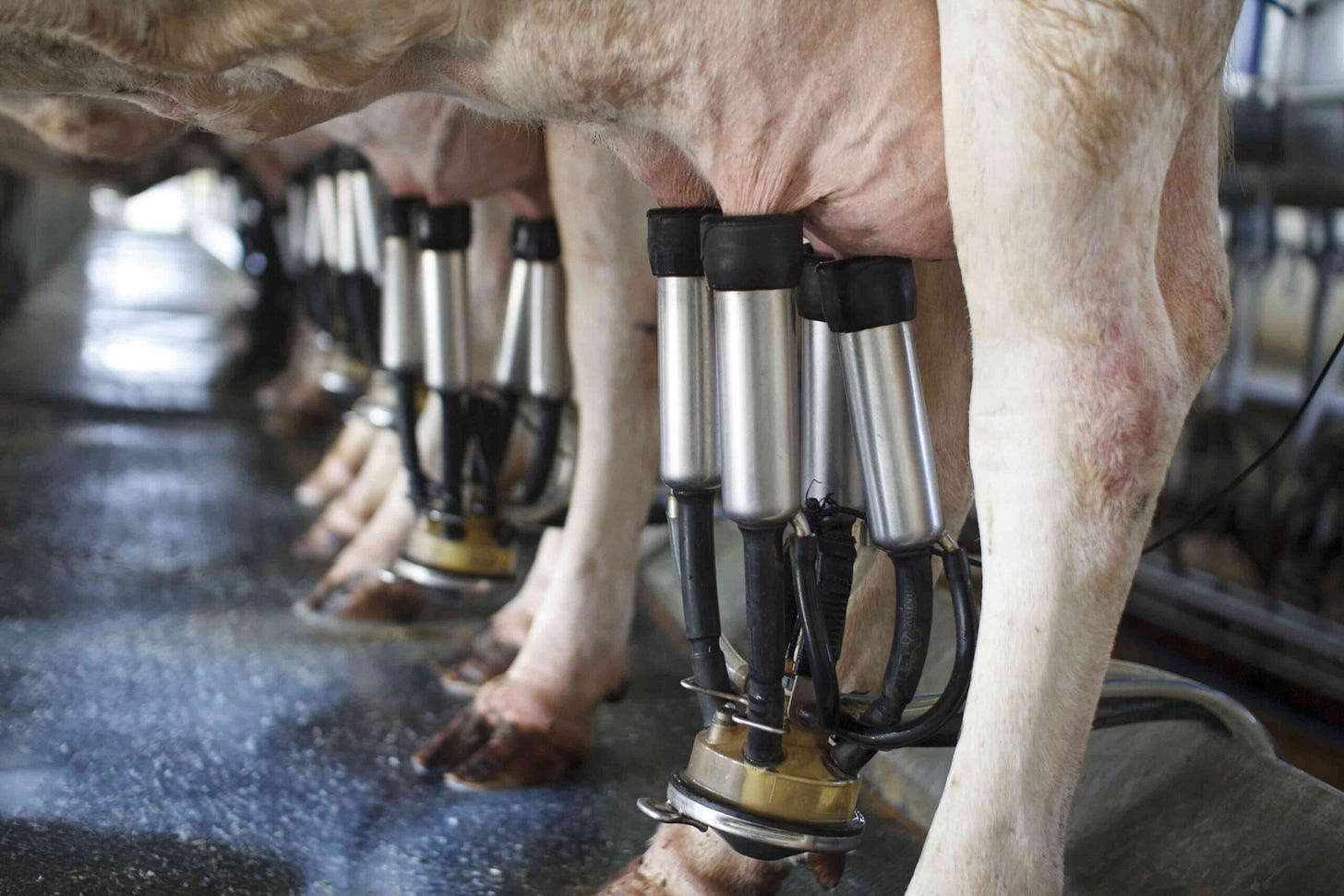Yellow Gold: The Price of Butter in Southland
"In a region built on dairy, people are asking: How did we get here?"
Across Southland, butter is starting to be talked about more than the weather; well, at least its price. Wee food magazine editor Louise Evans delves into the topic and shares her thoughts.
Some buy crypto. Some buy gold. I bought butter through a school hockey fundraiser for James Hargest College. Twenty-five bricks of it, to be tucked in my freezer like edible treasure.
I’d just ordered groceries online. The cheap butter, home-brand-don’t-weigh-it-ignore-the-colour-butter was $8. And sold out. The cheapest I could purchase: $9.90. The most expensive (excluding fancy butter): $12. So, at $4 for each 250gm block, buying fundraiser-Westgold felt like an act of grocery rebellion. Plus, think of the kids.
I wasn’t the only one. Brit from FlourBro picked up 40 blocks. “I’d get more,” she said, “but I don’t have the space. The cost of running a butter fridge would probably defeat the purpose.”
Across Southland, butter is being talked about more than the weather. There’s quiet shock in the dairy aisle. In a region built on dairy, people are asking: How did we get here?
The average cost of a 500g block of butter in Aotearoa reached $7.32 by February 2025, up more than 60% from the year before. In Southland, shoppers regularly report prices well above $8. What used to be a kitchen staple is now a fridge luxury.
The reasons aren’t unique to New Zealand. Global demand for milkfat has surged while supply has stumbled, bad weather in producing countries, high energy and feed costs, and continued appetite for dairy in global markets. In New Zealand, domestic prices closely follow international trends. We export most of our dairy, which means local shoppers are at the mercy of global prices.
Supermarkets say they’re simply passing on the higher costs. Dairy giants like Fonterra note that international demand lifts prices for everyone, and farmers are receiving higher payouts. But before you find your pitchforks and butter knives, their costs are rising too.
It’s also worth noting that butter is traditionally a low-margin product for supermarkets. As wholesale prices have surged over 40% globally in the past 18 months retailers have had to absorb much of the cost just to stay competitive. In some cases, stores like The Warehouse have even sold butter below cost, using it as a loss leader to bring shoppers in. That means supermarkets, too, are feeling the pinch caught between rising supply costs and consumer price resistance. We’re exporting the cream and getting skimmed at the checkout.
A recent RNZ article suggested prices may still rise further and shares a solid overview of the broad forces at play, but in Southland, the conversation has a different flavour. Here, the concern isn’t just what we pay, but why there isn’t a local alternative we can get behind. Why aren’t there any small-scale artisan butter producers in Southland?
Farm Fresh South, operated by Logan and Melissa, is one of the rare exceptions doing something close. They supply raw milk, pasteurised milk, cream and yoghurt in reusable glass bottles and have ambitions to expand further.
But for most would-be producers, the path stops there. The biggest barrier isn’t red tape, it's the milk itself. Nearly all of the region’s milk is already committed to large-scale processing contracts, mostly through Fonterra or other major processors. To make your own butter, you don’t just need a churn, you need your own cows.
And that’s not a small leap. Owning the herd, running the farm, and managing the production end-to-end is a massive undertaking. It explains why producers like Logan are few and far between, and why even those who care deeply about quality food often can’t break into artisan dairy. Regulation does add another layer, food safety plans, approved facilities, strict standards, but nothing insurmountable.
Zooming out, the Feeding Murihiku: Good Food Road Map paints a broader picture of why local food production remains so limited in the region. It highlights how Southland’s food system is geared toward export, with large corporates dominating production and processing. There’s little left that’s accessible, personal, or priced fairly for the community where it all begins.
It also shows the lack of infrastructure and clear pathways for local producers to enter the market, which stifles smaller-scale innovation. Even when the will is there, the way often isn’t.
In short, the barriers are practical, structural, and deeply embedded. They don’t just affect butter, they shape what’s possible across Southland’s entire food economy.
What we’re left with is a strange contradiction. Southland produces some of the world’s best milk, yet it’s difficult, nearly impossible, for small producers to turn that milk into butter without owning the supply chain from paddock to product.
There are other ideas. A micro creamery? Imagine a co-op-owned, mobile butter unit: part food truck, part community lab, churning Southland milk into affordable, high-quality butter right at the source. Farmers, bakers, and families all have a stake, with profits cycling back into local food access. Maybe the ILT or SDHB could implement a local procurement policy giving start-ups and small butter operations the early income stability they need to justify investment. Or maybe we build butter into the Food Hub concept and have shared-use dairy and food facilities giving Southland producers the tools to create butter and yoghurt without having to build their own factory. All of these cost money. Maybe we could all adopt a cow from the farmers. And be part of the corporate churn. Maybe we should just beg our bosses for butter bonuses. And skip the cringey pizza parties. Maybe we should just put butter in the same basket as the avocados and first homes.
Sign me up for the Better Butter Revolt. Until then, I’ll be in aisle four, having an existential crisis next to the unsalted.









You’ve captured the weirdness and frustration so well, the butter paradox is real. And, it's not just about butter, it’s about rebuilding food systems that work for us, not just through us.
Thanks for shining a light on this with wit and warmth. You’ve stirred the churn.
Great read Lou, scarily true of several products where NZ & Aus are primary producers. In Aus we sell our WATER! How nuts is that.
Definitely time to stop putting profit before the reality of feeding and watering locals.